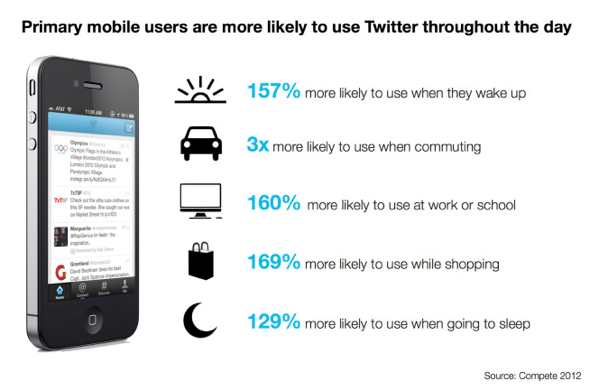Snapshot Big Data: Deutschland vs. Amerika (Videos)
Das permanente und verstärkte Anfallen von Daten dank mobiler Geräte, Nutzer-generierter Inhalte und sozialen Netzen hat ein neues Phönomen (oder sollte man sagen Buzzword) geschaffen: Big Data.
Auch wenn ich schon vor einigen Jahren über
Data Mining und
Business Intelligence referieren durfte, so erscheint Big Data nochmal einem ganz neuen Licht – voller, komplexer und nahezu unergründlich aufgrund der Masse des Contents, der von Nutzern und Unternehmen generiert wird. Daraus ein Sinnbild zu schaffen für unternehmenseigene Prozesse, Vertriebschancen, Marketingoptionen, Personal-Management Erkenntnissen oder auch Kundendienst-Optimierungen ist die große Aufgabe von Big Data in Unternehmen.
Die
Landesanstalt für Medien Nordrhein-Westfalen (LfM) hat in einem kleinen Film, das Thema Big Data mal grundlegend aufgerollt und leifert damit einen Status der Orientierung für den deutschsprachigen Raum. Fein illustriert fasst man das “große” Thema in einem einfachen Bild zusammen:
“Jeder Einkauf in einem Onlineshop und jede gesammelte Flugmeile verwandeln sich in einzelne Datentröpchen, die das Datenmeer weiter ansteigen lassen. Für die Kunst mit diesen Datenmassen umzugehen und sogar sinnvolle Anwendungen daraus zu entwickeln, haben Fachleute einen Begriff entwickelt: Big Data!”
Ob Vorschlag für das Abendprogramm oder Anregung zu weiteren Bücherkäufen -wie bei Amazon schon seit Jahren praktiziert- Big Data scheint die neue Marketingwaffe zu werden, die gleichzeitig Unternehmen neue Businesszweige für Produkte und Dienstleistungen erschließen lassen soll. Big Data liefert die Basis neuer Analyse-Methoden und detaillierter Vorhersagen, ist aber auch für die gesundheitstechnische Trendforschung von erheblichem Vorteil, wie das Video verdeutlicht. Typisch für Deutschland wird auch das Thema Datenschutz kritisch betrachtet. “Einsehen, Korrigieren und Löschen” von Daten im Sinne des Datenschutzes darf nicht unbeachtet bleiben.
In den USA wird das Thema etwas lebhafter und entspannter gelebt sowie diskutiert. Dort leisten sich Unternehmen bereits
Corporate Data Scientists, die in den Datensumpf des Unternehmens eintauchen. Sie fischen die Perlen für Business Development, Produktentwicklung und Prozessopimierung heraus und fügen sie zu einer umsatzbringenden Prozesskette zusammen.
Google TechTalks liefert mit dem nachfolgenden Video “Leaders in Big Data” einen klaren Einblick in die Aussichten. Big Data wird dort als einer der wichtigsten Trends von diversen Analysten wir Gartner und Forrester für Unternehmen gesehen. Dabei geht es bei dem Thema nicht mehr um einzelne kleine Projekte sondern um den Einfluss auf strategische Informationsarchitekturen, die die Infrastrukturen der Unternehmen neu ausrichten. Der Umgang mit großen Datenvolumina, ihrer Vielfalt und Umlaufgeschwindigkeit erfordert die Umstrukturierung von Unternehmen und Prozessen, so die Experten.
Es geht nicht um Datenbanken sondern um die Verschmelzung der “Multi-Touchpoint”-Systeme, bestehend aus Datenbanken, Datenhandel, Datendienstleistungen, Data Mining, Content Management, Community Management und übergeordneten Metadaten zusammenfügen, um so eine vorausdenkende und schnell operierende Datenbanklogik zu schaffen. Dabei wird auch das Thema Dataschutz als kritischen Thema gesehen. Dennoch schätze die Experten, dass sich hier eine Synergie aus Mensch und Maschine einstellen wird. Privacy Policy wird sich automatisch über einen Mediationsprozess einstellen zwischen den Menschen, die Fragen stellen und denen, die die komplexen Datensysteme aufbauen, wie zum Beispiel Google. EMC hat übrigens sehr anchaulich kürzlich den
Big Data Business Maturity Index aufgebaut.
Nehmt Euch die knappe Stunde, um die Sicht der amerikanischen Big data Experten zu verstehen…
PS: Als Lesetip erscheint ein neues Buch
“Human Face of Big Data” von Rick Smolan und Jennifer Erwitt als wertvoll.
Die
Reviews sind
verheisungsvoll. Die interaktive
Tablet-App zu Big Data ist empfehlenswert und erklärt einiges…
Wie seht Ihr das Thema Big Data? Welche Chancen ergeben sich hier für Unternehmen und Nutzer? Ist Deutschland denn euerer Meinung schon genauso weit wie USA beim Thema Big Data, oder eher nicht?



 In a recent report called
In a recent report called 






